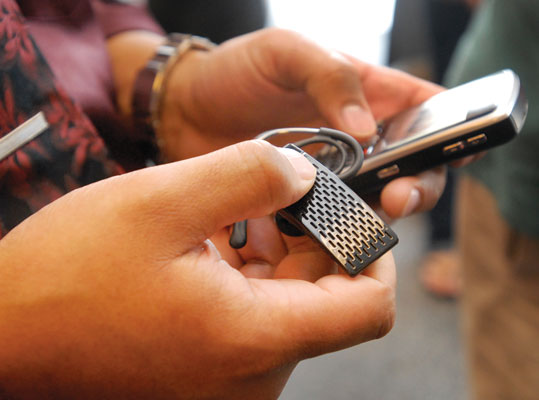South Santa Clara County’s 50-plus-year honeymoon with the 408 is over, and telephone users are encouraged to get their dialing fingers warmed up to welcome a new area code to town.
Area code 408, the lone prefix for Santa Clara County residents since its inception in 1959, will be joined by area code 669 for all new users once all 408 numbers have been exhausted.
The “overlay” – as it is referred to – does not mean someone with a 408 area code will have to change their phone number. But it does mean that land lines with 408 numbers will have to dial 1 then the area code, then the seven-digit phone number no matter what area code they are dialing, according to the California Public Utilities Commission. This comes into effect on Oct. 20.
Cell phone users will likely not have to dial “1” before the 10 digits, according to CPUC spokesman Christopher Chow.
It also means residents and businesses in the 408 will have to reprogram their cell phone address books and automatic dialing systems, as a first step in the implementation of the new area code.
Businesses and organizations with automatic dialing systems will have to reprogram their automated directories to reflect the change.
These systems include life safety systems, fax machines, Internet dial-up numbers, alarm and security systems, gates, speed dialers, call forwarding settings, voicemail services, and similar functions.
Gilroy City Hall has found a way to make the transition almost unnoticeable for city staff, and without an abundance of time or difficulty in the implementation.
“It will affect us in so far as we are going to be reprogramming our phone system so that when our employees dial an external number it will automatically add the “1-408” for them,” said Steve Baty, the city’s systems administrator. “We just make a change to the template” that runs the city’s phone systems.
Morgan Hill residents Lea Vega and Josette Benavidez don’t think the new dialing requirements, or even the fact that they will have to update cell phone contacts lists, will be troubling.
“I’m not complaining about the new area code,” Vega, 34, said. “I think it’s going to be a great idea for this overpopulated area.”
Benavidez, 33, added that she already enters the 408 area code every time she enters a new contact into her cell phone directory.
“That’s the easiest way to text somebody,” she said.
Some businesses think the new overlay and 10-digit dialing will be difficult to get used to.
“I think it will be inconvenient at first like with all change,” said Susan Valenta, president of the Gilroy Chamber of Commerce. “It may be a painful transition, but we did understand that when it was first introduced to us.”
Valenta and members from other chambers of commerce throughout Santa Clara County sat down for several meetings with the California Public Utilities Commission dating back two years to discuss the impact of a second area code within Santa Clara County.
There were also five open public meetings for residents to voice their opinions as well. According to CPUC representative Christopher Chow, there was about a 3-to-1 margin in favor of using the overlay rather than an area code split.
“There was a limited way of going about it,” said Valenta, who agreed unanimously with the chamber heads on the overlay. “What we try to do as business organizations is do it the way that’s less impactful for businesses.”
The new area prefix will be 669 for new phone numbers when all available combinations of phone numbers with the 408 area code are exhausted. That will likely be before the end of this year, according to Chow.
There are currently about 8 million phone numbers in the 408 area code, Chow said.
Calls that are in a consumer’s local calling area remain local calls and consumers can still dial three digits to reach 911, 211, 311, 411, 511, 611, 711 and 811.
Over the past 10 years, California and other states have implemented more than 50 area code “overlays” throughout the U.S. to make additional telephone numbers available to meet growing demand.








